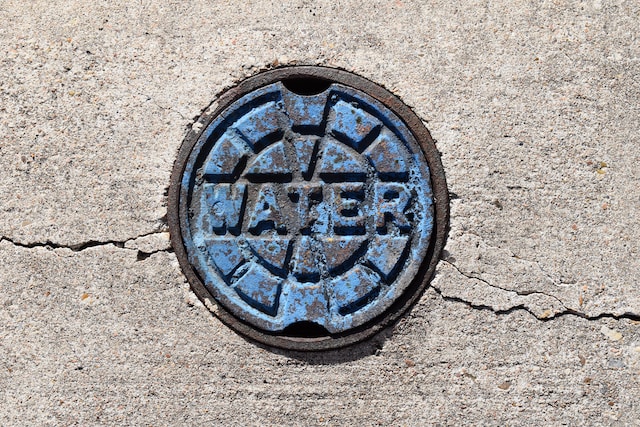Home insurance can cover various unexpected damages or losses from fires and floods to theft and vandalism. However, filing a claim can sometimes be as stressful as the incident, particularly if your home insurance claim is denied. We will guide you through the necessary steps when facing a home insurance claim denial, equipping you with the knowledge to navigate the process successfully.
Understanding home insurance claim denials
Understanding why a home insurance claim was denied provides a clearer path to overturn the denial or prevent future claim denials. Denials typically happen for several reasons.
- Lack of Coverage for Specific Damage: Not all types of damage are covered under a standard home insurance policy. For instance, typical policies do not cover flood or earthquake damage. Your claim can be denied if your home’s damage falls into an uncovered category.
- Inadequate Documentation: Insurance companies require evidence of the damage for claim processing. The insurer may deny the claim if you fail to provide satisfactory documentation — such as photos, videos, or a detailed written account of the incident.
- Policy Exclusions: Every insurance policy contains exclusions, specific situations, or damages the policy does not cover. If your claim falls under one of these exclusions, it’s likely to be denied.
- Missed Deadlines: Insurance policies stipulate a time frame within which you must report a loss or file a claim. If you miss this deadline, your claim could be denied.
When facing a denial, revisiting your policy’s terms and conditions is important. Look at your policy declarations page for a summary of your coverages and limits. Review the exclusions section and the conditions under which the insurer agrees to pay a claim.
Your policy’s fine print may contain complicated legal jargon, so consider seeking help from an insurance professional to interpret the language.
Steps to take when your claim is denied
Once you understand why home insurance claims can be denied, you can navigate the specific steps to address your denial situation.
Review the denial letter
Upon receiving a claim denial, the first action is to review the denial letter sent by the home insurance company. This letter provides detailed reasons for the denial, ranging from lack of coverage to inadequate documentation or missed deadlines for filing a claim.
Take note of the specifics mentioned in the letter. Understand these grounds for denial, as they will form the basis of your appeal if you choose to challenge the decision.
Contact your insurance company
After reviewing the denial letter, the next step is to get in touch with your insurance company or your insurance agent. Request a comprehensive explanation for the denial. Your insurance provider should be able to elaborate on the reasons outlined in the denial letter, assisting you in grasping the grounds for the denial more fully.
This conversation is not just about gaining clarity but also about opening lines of communication for possible negotiations. Don’t hesitate to ask questions about anything you find unclear or confusing. Remember, understanding the insurance company’s perspective is key to effectively countering the denial.
Additionally, use this opportunity to inquire about the appeals process. Each insurance company has its own set of procedures for filing an appeal. Your insurer or agent should explain this process, including any deadlines or documentation requirements.
Appealing a denied home insurance claim
Before jumping straight into the appeal process, form a plan and ensure you have all the necessary elements. This will increase your chances of reversing the denial and getting your claim approved.
Gather supporting evidence
The first step in the appeal process is to compile a solid body of evidence that supports your case. This might mean collecting further documentation substantiating your claim, such as repair estimates, receipts, contracts, etc. Photographic or video evidence can also be highly persuasive.
You should also seek out expert opinions or assessments that reinforce your case. For instance, a professional assessment may be beneficial if your claim was denied based on wear and tear, but you believe a covered peril caused the damage.
Write a formal appeal letter
Next, you’ll need to put your case in writing by drafting a formal appeal letter. This should clearly outline why you believe the denial of your claim was unwarranted, drawing attention to any discrepancies or overlooked details. Be sure to link your arguments to specific clauses in your insurance policy and point out how your collected evidence supports your case.
Submit the appeal
Once your appeal letter is ready and you have all your supporting documents in order, it’s time to submit your appeal. Make sure you follow your insurer’s specific procedures for lodging an appeal. This may involve sending your appeal by certified mail, or via a designated online portal.
Working with a public adjuster or attorney
When dealing with a stubborn claim denial, getting an expert involved can make all the difference. Public adjusters and attorneys can offer expertise and guidance, potentially turning the tide in your favor.
A public adjuster works on the policyholder’s behalf to help settle their home insurance claim. They can thoroughly review your policy, assess the damage, and negotiate with the insurance company on your behalf. This can be particularly helpful if the dispute revolves around the extent of the damage or the cost of repairs.
On the other hand, attorneys can offer legal advice and represent you if the dispute escalates to a lawsuit. They can navigate complex insurance laws, challenge erroneous denials, and advocate for your rights as a policyholder.
However, hiring a public adjuster or attorney comes with costs. Public adjusters typically charge a percentage of the claim settlement – usually around 10-20%. Attorneys might charge by the hour or work on a contingency fee basis, which means they only get paid if they win the case.
Seeking alternative dispute resolution
If working with a professional doesn’t resolve the dispute, consider alternative dispute resolution methods like mediation or arbitration. These can often provide a faster, less expensive resolution than litigation.
Mediation involves a neutral third party who helps the disputing parties reach a voluntary agreement. Arbitration, on the other hand, is a more formal process where the arbitrator makes a binding decision based on the evidence presented.
Before you embark on either process, understand the potential costs, the required time commitment, and whether the outcome will be binding or non-binding.
Taking legal action
If your claim is significant and all other avenues have been exhausted, you may consider filing a lawsuit against your insurance company. This should be your last resort, as litigation can be costly and time-consuming.
Before initiating legal action, consult with an attorney to evaluate the strength of your case and understand the potential costs and benefits. Be prepared for a lengthy process, which will require patience and resilience.
Facing a denied home insurance claim can be disheartening and challenging. But armed with knowledge and determination, you can navigate this situation and potentially overturn the denial. The key lies in understanding your policy, gathering strong supporting evidence, following the appropriate appeals process, and considering professional help when necessary. Your persistence and understanding of the process will go a long way in reaching a fair resolution.




